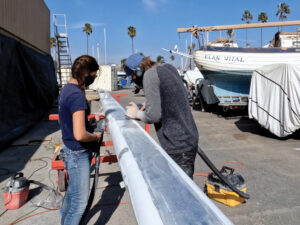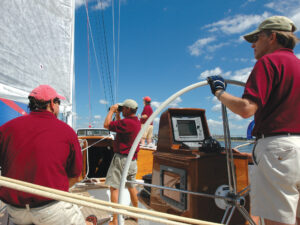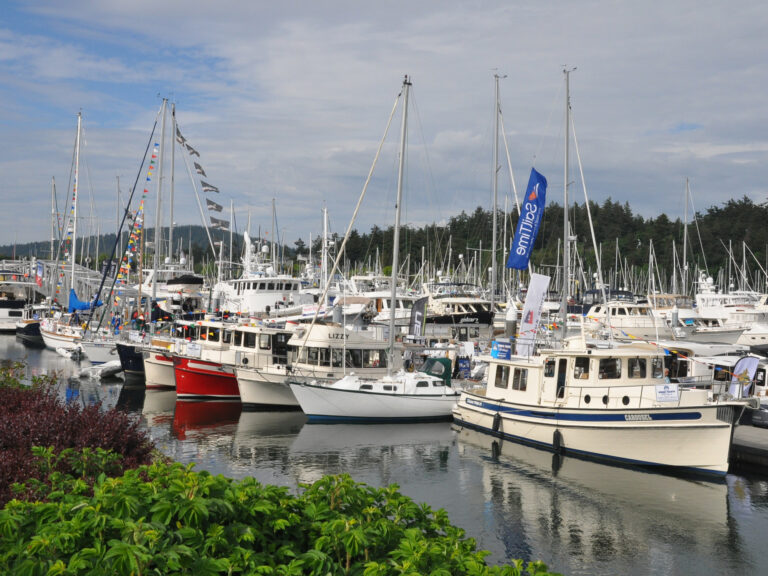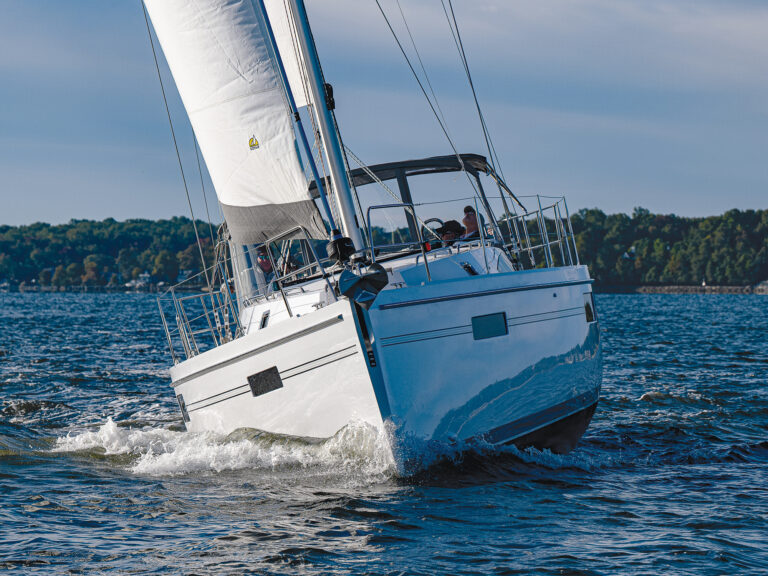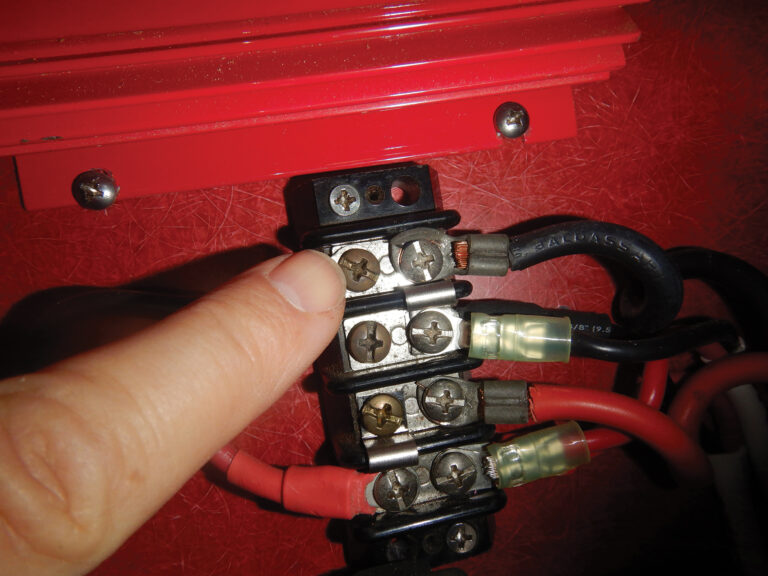
In all the years since renowned 1950s yachtsman Carleton Mitchell coined the term “The Thorny Path” for the often difficult and taxing passage from Florida to the Virgin Islands via the Bahamas and Puerto Rico, sailors have, in great numbers, taken this well-trodden route. Numerous books and articles have addressed the tactics and the pitfalls to be overcome when making this classic run, and yet, it seems that many sailors are missing some of the simplest and most important strategies that can assure a relatively easy, if not completely painless, experience.
The biggest problems most sailors face are the nearly incessant easterly trade winds and large sea conditions that prevail much of each year along the southern parts of this route, as well as winter cold fronts that can strongly affect the northern parts. Many people undertake this passage as part of a year or longer cruise to the Eastern Caribbean and often eventually return via this same route at the end of their adventure. If a priority is given to timing, and if a careful watch of weather conditions is undertaken, it is in fact entirely possible to travel all the way through the Bahamas and on to the Virgin Islands without bashing to windward or beating up the crew in rough conditions. It is all about when you leave and how willing you are to make use of good weather windows when they arrive.
There was a book written some years back by a now-retired cruiser named Bruce Van Zandt titled Passages South. For years, from the late 1980s up until not too long ago, this was considered by many newbie cruisers to be almost akin to a textbook on how to make the run down through the Bahamas to the Eastern Caribbean. While some of the tactics and ideas in that book are good, all too often, people seem to overlook the most obvious ways in which to truly have a painless passage south.
Number one is timing. Try to leave Florida or the Southeast United States no later than early to mid-November, making use of the early autumn cold fronts. Instead of stopping at each island along the way or avoiding overnight runs, ride these favorable windshifts for as far and as long as you can. In the late fall, it is not uncommon to see periods of two to five or more days when the winds go northerly, or even northwesterly, or very light. If the wish is to get south and east quickly, leave as soon as conditions allow, and ride the favorable weather window until the wind and sea conditions change for the worse.
The advantage of taking the path through the Bahamas and along the coasts of the Dominican Republic and Puerto Rico is that you can stop at one of many harbors along the way and enjoy a new place when the winds crank back up and the seas get too large. When things die down again, leaving as soon as conditions permit allows for an easy way east.
While heading directly offshore from farther north and making the run out to 65 west and south is surely the quickest way to the Eastern Caribbean, the chance of being caught in heavy weather is always present along that route. By taking the path via the Bahamas, you will always have the option of stopping when conditions become uncomfortable. If you begin the passage in November and plan to be in St. Thomas or the British Virgin Islands no later than Christmas, then chances are good that you will have lighter and more favorable winds and smoother conditions all the way.
Another good time to head south is in May and June, and even into early July. As long as care is taken in choosing a window for departure, and a close watch is kept for potential early-season tropical development, the wind and sea conditions during these months can be quite benign.
Making use of early- or late-season cold fronts—or a high-pressure ridge, if you are lucky enough to encounter one—will usually ensure several days of good sailing, or at least comfortable motor-
sailing conditions. If your wish is to see the Bahamas and the Dominican Republic, and to spend a month or two cruising those areas, consider exploring these islands on the return trip. It is much easer and more fun to sail the whole way through the Bahamas going downwind, stopping whenever you wish instead of bashing upwind to each island along the route. Sailing downwind on your return voyage will be enjoyable and relaxing, and then who cares if it’s blowing 20 to 25 knots? You will have only a nice, fast sail rather than having had to beat into it.
Although it is possible to make the voyage to the Caribbean islands via the Bahamas in almost any month and have good conditions, in the height of the winter season, favorable weather windows tend to be shorter, the seas rougher and the windshifts more abrupt. Still, riding a cold front south and east can gain you precious miles without the need to motor or bash to windward. Be prepared to put into a port by the time the winds clock to the northeast and east, and be ready to wait for two or more weeks for your next chance to move along.
I might be a bit old-fashioned, but I still strongly believe that in addition to a satellite phone, inReach or other satellite messenger device, or even Starlink, it’s a great idea to have an SSB radio. In fact, the ARC Caribbean 1500 rally requires participating vessels to have this important safety item installed. The Salty Dawg Rally also strongly encourages this as one of two approved redundant ways to communicate.
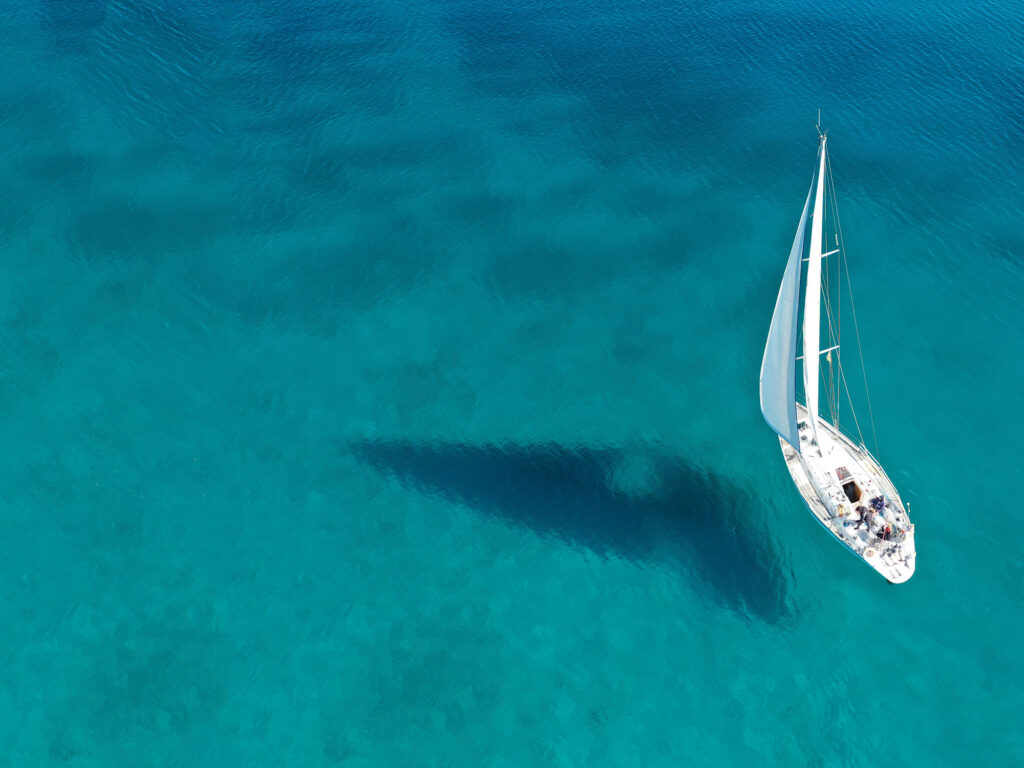
If you have an SSB radio, in addition to monitoring the National Weather Service’s offshore weather broadcasts, listening to weather guru Chris Parker’s Marine Weather Center forecasts can be a real help when choosing your weather windows for moving east. Radio networks are also a good way to stay in touch with other cruisers and relay important safety or security messages. Many boats access internet through cell towers in the Bahamas, Turks and Caicos, and along the coast of the Dominican Republic, and many of the larger cellphone providers allow for limited high-speed internet usage along this route. Iridium Go and Starlink are also becoming quite common on cruising yachts, allowing for frequent weather monitoring using some of the weather apps such as PredictWind and Windy, and others can allow astute captains to choose the right time to leave and, more important, plan where you will be when the conditions change for the worse.
This all demands a lot of careful planning and paying close attention to the various computer models, as well as listening regularly to Parker’s morning synopsis. For a modest fee, you can also subscribe to his daily weather updates via email, or even check in with him by SSB radio or email if the need arises. Usually, keeping a close ear on the daily changes in the forecasts will give you a pretty good idea of when to leave for each leg of your voyage. These long-range forecasts can be a great boon as you anticipate how soon the conditions might change or how far you might go before deciding to put into a port.
With all of the ever-improving advances in weather predictions, planning and completing comfortable passages should be a simple exercise. A willingness to do a few overnighters or two- to three-day runs makes it entirely possible to voyage down to the Eastern Caribbean islands in a painless way through The Thorny Path.
Websites & Apps Worth a Look
Chris Parker’s Marine Weather Center
mwxc.com
Passage Weather
passageweather.com
Wunderground’s Tropical Weather Page
wunderground.com/tropical
National Hurricane Center
nhc.noaa.gov
Windy App
Loads of useful user-friendly ways to interpret the various computer-generated weather models. One of the two most popular apps for cruising sailors.
PredictWind App
An app with virtually all the same weather models as Windy but presented in a slightly different format.
Mike’s Weather Page App
A subscription service with almost too much information but a great site full of links and assessments.


